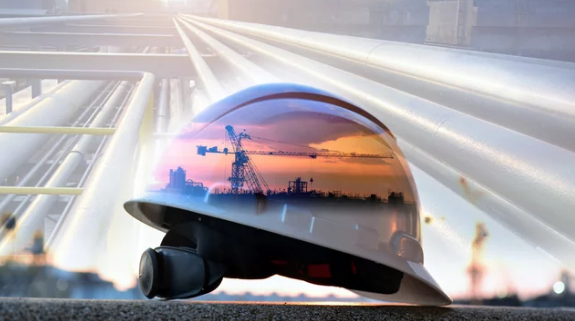In nuclear engineering, containment systems are the final line of defense between a reactor’s radioactive core and the external environment. The integrity of these enclosures is critical for safety, environmental protection, and regulatory compliance. Over decades, engineers have developed advanced containment designs that can withstand extreme pressures, temperatures, and even natural disasters, ensuring nuclear power remains one of the safest energy sources.
This article explores engineering approaches to nuclear containment, innovations in design, and the technologies that make modern reactors safer than ever.
The Role of Containment in Nuclear Safety
Containment structures serve several critical purposes:
- Preventing Radioactive Release: Enclosing the reactor core ensures radioactive materials do not escape into the environment.
- Protecting Against External Events: Containment shields the reactor from natural disasters, airplane impacts, and other external threats.
- Supporting Emergency Cooling: Modern enclosures are integrated with cooling systems that manage heat in emergency scenarios.
- Regulatory Compliance: Containment design is a central requirement for licensing and operational approval worldwide.
In essence, containment is the backbone of nuclear safety engineering, bridging reactor technology with public protection.
Types of Nuclear Containment Systems
Engineers design containment systems based on reactor type, capacity, and risk profile:
1. Dry Containment Structures
- Large, reinforced concrete domes surrounding the reactor.
- Equipped with steel liners to prevent leaks.
- Common in Pressurized Water Reactors (PWRs).
2. Wet Containment Systems
- Use a water pool around the reactor for pressure suppression during emergencies.
- Commonly paired with Boiling Water Reactors (BWRs).
- Water absorbs heat and mitigates pressure spikes during accidents.
3. Hybrid Containment Systems
- Combine dry and wet features for enhanced safety.
- Include reinforced concrete, steel liners, and pressure suppression pools.
- Provide redundancy against multiple failure scenarios.
Engineering Innovations in Containment Design
Modern containment systems employ advanced materials, structural design, and monitoring technologies:
1. High-Strength Materials
- Reinforced concrete with high compressive strength.
- Stainless steel liners resistant to radiation and corrosion.
- Materials engineered to withstand high temperatures and internal pressure spikes.
2. Passive Safety Systems
- Designs that maintain containment integrity without active mechanical systems.
- Gravity-driven cooling or pressure-relief mechanisms reduce reliance on human intervention.
- SMRs often integrate passive containment features to enhance reliability.
3. Digital Monitoring and AI
- Sensors track pressure, temperature, and structural integrity in real time.
- AI algorithms predict stress accumulation and potential weaknesses.
- Enables preventive maintenance and rapid emergency response.
4. Seismic and Impact Engineering
- Containment structures are tested to withstand earthquakes, tsunamis, and severe impacts.
- Advanced modeling ensures resilience under extreme conditions.
Lessons from Historical Nuclear Events
Past incidents have driven improvements in containment engineering:
- Three Mile Island (1979): Highlighted the need for reliable pressure management and emergency cooling systems.
- Chernobyl (1986): Absence of a robust containment structure led to catastrophic radioactive release.
- Fukushima Daiichi (2011): Reinforced the importance of flood-resistant containment designs and passive safety systems.
These lessons have shaped modern engineering standards, making today’s nuclear enclosures significantly safer.
Containment in Advanced Reactor Designs
Next-generation reactors are redefining containment engineering:
- Small Modular Reactors (SMRs): Compact, fully enclosed modules with passive cooling and simplified pressure management.
- High-Temperature Gas Reactors (HTGRs): Ceramic fuel and high-integrity enclosures manage extreme heat without pressurized water.
- Molten Salt Reactors (MSRs): Low-pressure operation reduces structural stress while containment enclosures are designed to handle chemical and thermal loads.
- Fusion Reactors (ITER, France): Multi-layered containment to manage high-energy plasma and neutron flux safely.
These innovations demonstrate how containment engineering evolves hand-in-hand with reactor technology.
Global Leaders in Containment Engineering
Countries with advanced containment designs include:
- USA: PWRs and SMRs integrate steel-lined concrete domes and passive safety systems.
- France: ITER and commercial nuclear plants feature multi-layered containment with advanced monitoring.
- China: HTR-PM incorporates ceramic and concrete enclosures for high-temperature gas reactors.
- Russia: BN-800 fast reactors employ hybrid containment designs capable of withstanding high neutron flux.
International collaboration has accelerated research and best practices, setting new global safety benchmarks.
The Future of Nuclear Containment
Looking forward, containment engineering will focus on:
- Integration with Digital Twins: Simulate containment performance under extreme scenarios for proactive maintenance.
- Advanced Materials: Ultra-high-strength composites and radiation-tolerant alloys.
- Modular and Scalable Containment: Particularly for SMRs and micro-reactors.
- Hybrid Passive-Active Safety Systems: Combining automated cooling, pressure relief, and real-time AI monitoring.
The future of nuclear safety depends on combining structural excellence with digital intelligence.
Conclusion
Containment mastery is a cornerstone of modern nuclear engineering. Through reinforced structures, passive safety systems, advanced materials, and AI-driven monitoring, engineers have made nuclear enclosures stronger, smarter, and more resilient than ever.
From legacy PWRs and BWRs to SMRs, Generation IV reactors, and fusion experiments, innovative containment engineering ensures that nuclear energy remains one of the safest, most reliable sources of clean power. By mastering containment, engineers protect not only reactors but also communities, making the promise of safe nuclear energy a reality for the future.
Also Read :
